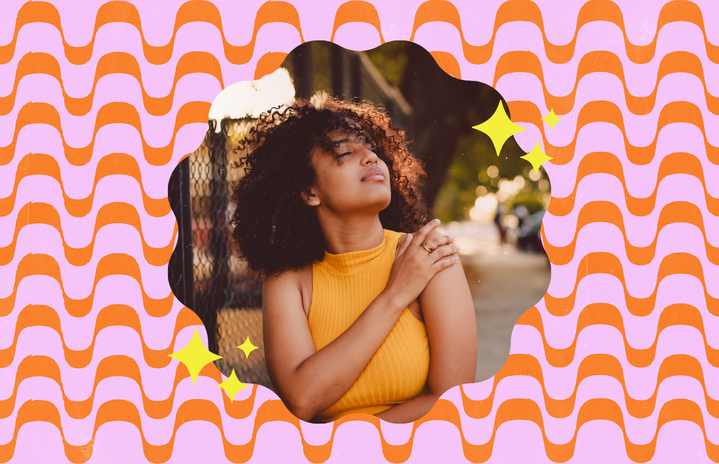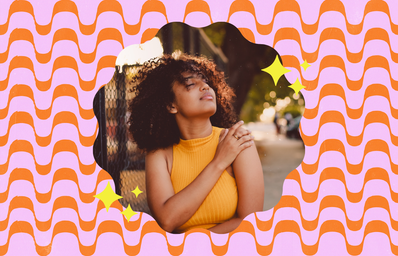Ever seen “The Princess Diaries”?
With her hand placed gently on my arm, my mother silently consoled me until words could reach her lips. “You’re the only one that has this in our family, Brooke. I don’t know what else to tell you.” “The only one to have—what?” I asked, bracing for the life-changing response to come. “Curly hair,” she replied as my hairbrush was shoved back into my hands with a chuckle to boot. “You’re on your own.”
With that conversation coming to a close, my laptop could swing open. I scoured the Internet for terms like curl type, diffusers, hair masks, clarifying shampoos and co-washes. What did this all mean? I may be a second-year college student, but I also consider myself a twentieth year when it comes to bouncing between different mousses and leave-in conditioners. I’ve come a long way since brushing my hair when it was bone-dry, but I still have a lot to learn about my curls.
As I was embracing my hair, I wanted reassurance from the media that this journey would be worth it. Everyone wants to see who they are represented on screen, and the same goes for my curly girls.
How Curls are Generally Depicted
“We see curls, waves and frizz as a metaphor for the untamed animal/nature side of ourselves,” Forbes writes. Whether they’re wicked or just plain weird, curls on-screen signify that characters are different than their counterparts, with examples being “Harry Potter’s” Sybill Trelawney and “Tangled’s” Mother Gothel. This screen shorthand of curls explored in Daily Mail’s article shows that to be the leading lady that gets the guy, a flat iron has to come into the picture.
A movie known for such a makeover montage is “The Princess Diaries.” This classic Disney film stars Anne Hathaway and Julie Andrews, with a third movie recently being announced. I had never seen either of the films as a kid, so I decided to give it a try on an airplane ride as a high schooler. For almost the full first half of the movie, we see Hathaway donning a head full of fluffy, brushed-out curls and a pair of glasses. “What a frizzball. Look at her hair,” a classmate mocks before the movie’s runtime even reaches double digits. As part of her “princess lessons,” Hathaway’s character goes through an astonishing makeover with the help of the royal stylist, ditching the lenses and straightening her hair. This stereotypical, 2000s take on beauty wasn’t surprising to me as a teenager but would’ve been a little heartbreaking had I watched the movie when I was younger. Was straight hair really the only way to look and feel like a princess? How many little girls had felt this way upon seeing the film?
This perception of her finally becoming “beautiful” after changing how she looked was at the heart of the plot and other stars have chimed in with their opinion. For instance, Little Mix’s Jade Thirlwall reposted an Instagram meme depicting an annoyed curly-haired girl watching this scene. The original comic was drawn by @cassandracalin.
Even the ancient world got this same message across. In the episode Curly Hair Conundrums on the podcast “Stuff Mom Never Told You,” the two hosts bring up some good examples. An art history professor at Skidmore College, Penny Howell Jolly found that in biblical Adam and Eve paintings, this first woman is frequently depicted with curls as she was the one who caused sin to enter the world. Furthermore, Medusa, who is the notorious female monster in Greek mythology, is known for her curly head consisting of serpents that turn you to stone with one look.
The Root of the Problem
What a great opportunity to make a hair pun with “root” in the subtitle, but let’s not change topics here. On set when filming for screens big and small, straighter hair is easier to work with and keep consistent between takes. Yet, this doesn’t stand for only live-action pieces. For animators, the texture of curly hair is harder to create than straight locks. MIT researchers, while looking into effects of curling for engineering purposes, now have a three-dimensional model that “describes mathematically how the properties of the curl change along the arc length of a hair,” according to the study’s co-author Pedro Reis. That means more curly protagonists like Merida from “Brave” could be coming soon if animation studios put this research into practice!
On a more serious note, there’s evidence that these TV tropes probably originated due to racism and antisemitism. Have you ever seen a witch on-screen that has straight locks? This is a stereotype derived from medieval Europe and “jew-coding” with the association of curls and hooked noses being evil.
Similar stereotypes are also applied to African American hair. In the podcast “Stuff Mom Never Told You” I mentioned earlier, hosts Caroline and Cristen discussed these social perceptions on women’s curly hair. “When it comes to women straightening their hair, specifically in African American communities, there’s such an ugly history of racism tied up with that because of preference for Northern European features.” For decades, social media and advertisements have unfortunately tried to convince us that this hair “denotes dirtiness, laziness or not conforming to social standards.” Though I do not identify as African American nor Jewish, these were still important points to bring up in curly hair’s relation to the public eye and to recognize how these false stereotypes came to be.
I’m one of the few girls that isn’t sporting straight hair when I look around the room at formal events, but I am proud nonetheless. I might not have the tightest waves compared to other girls or know what to do with my mane 24/7, but I will forever relish the fact that people have told me I look like Emma Watson and Julia Roberts. Whether the media supports me in my curl journey or not shouldn’t be my business.


